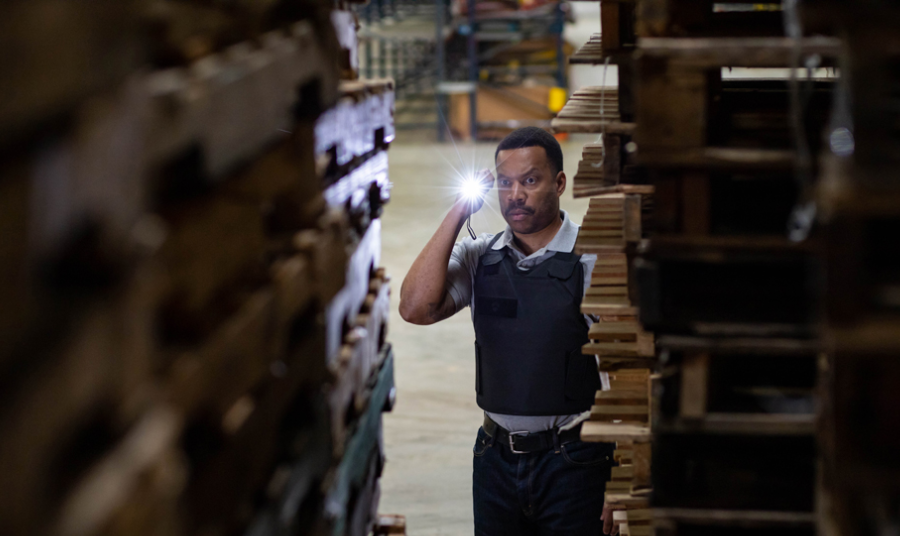When people think of “Kevlar” most imagine a vest – any vest – that stops bullets. Many assume that the modern American warfighter still wears Kevlar vests just like his predecessors in the 1990s. In fact, the Kevlar Personnel Armor System for Ground Troops (PASGT) and modern plate carrier have little in common with each other.
For starters, Kevlar is actually a registered trademark of the Dupont company, who originally used the lightweight but highly durable material as a replacement for steel in racing tires. Kevlar itself is a blend of a tough but light material called aramid that is unique to Dupont. Other companies produce aramid fibers and armor but cannot legally use the Kevlar brand name.
In contrast, the armored ceramic plates are made of various materials such as steel, ceramics, or most commonly, ultra-high-molecular-weight-polyethylene also known as UHMWPE. While hard armor plates can be made of Kevlar, UHMWPE provides some advantages Kevlar lacks.
When the United States military first started issuing Kevlar body armor en masse to its troops, it came in the form of the PASGT system in the 1990s. This revolutionary body system replaced the aging flak jacket used in the Vietnam War, which relied on ballistic nylon and was never meant to survive a direct impact from even small pistol calibers. The PASGT system, on the other hand, was built with lightweight, flexible Kevlar. The new armor could stop 9mm rounds but would only slow down a round if hit by a larger rifle bullet, which would still penetrate.
Despite the fact it could defeat 9mm, the PASGT was meant to only protect against fragmentation threats. For rifle rounds, the Army needed something sturdier. Beginning in 1998, full production of a new, exciting vest came underway. The Interceptor Body Armor was made of Kevlar aramid fibers while protected from the front and back by solid plates. This new type of armor could take on direct hits from 7.62x39mm rounds and survive. This isn’t to say that the UHMWPE is the end-all be all in terms of personal armor, but it comes close.
STRENGTH
Bulletproof materials require immense strength, and tensile strength measured in pascals determines how much stress a material can take before it breaks under tension. While Kevlar is quite sturdy with its tensile strength of 3,620 megapascals (compared to the 400 megapascals of structural steel), it pales in comparison to UHMWPE, which has a tensile strength so high it can stretch from 4 to 10 gigapascals, making it the world’s strongest fiber.
Winner: UHMWPE
DURABILITY
Aramid fibers like those in a Kevlar vest decay faster than UHMWPE and are degraded by UV light. A Kevlar vest will usually begin to show signs of degradation after five years, after which time it would no longer be wise – or safe – to trust one’s life to the vest, while UHMWPE fibers in armor tend to persist for far longer, thanks to their unique molecular structure, which makes them resistant to water, moisture, chemicals, ultraviolet radiation and microorganisms.
Winner: UHMWPE
TEMPERATURE
When operating in a warm environment, UHMWPE’s light weight and high heat resistance make it a primary candidate for service in deserts and prairies. In contrast, aramid vests are excellent at retaining heat, which makes them more suitable for cold weather operations.
Winner: Varies
MOISTURE RETENTION
UHMWPE is waterproof, and unlike steel or any other metal, will not rust or corrode. This unique property is highly valued among both the Navy SEALs and shark divers, who use UHMWPE as part of their armor. Certain companies sell shark-proof wetsuits with UHMWPE sewn in with the nylon, while SEALs regularly utilize UHMWPE plate carriers during UDT operations. Aramid, on the other hand, can take on water. Wearing a bulletproof vest in a wet or humid environment can result in an aramid vest taking on as much as 3.5% of its own weight in water.
Winner: UHMWPE
If someone wants something with a combination of the benefits of both fibers, they should look into BulletSafe vests. BulletSafe offers bulletproof vests made of a blend of Ultra High Molecular Weight Polyethylene with a blend of aramid fibers, giving users a wide array of options from bulletproof backpacks to soft armor and hard plates. BulletSafe vests are NIJ certified, and the company is committed to providing affordable quality bulletproof products to any and all protection-minded individuals.


1 comment
Surya
Hey, I’m a trader . I’m looking to import bullet proof jackets to India. If interested do send me an e-mail